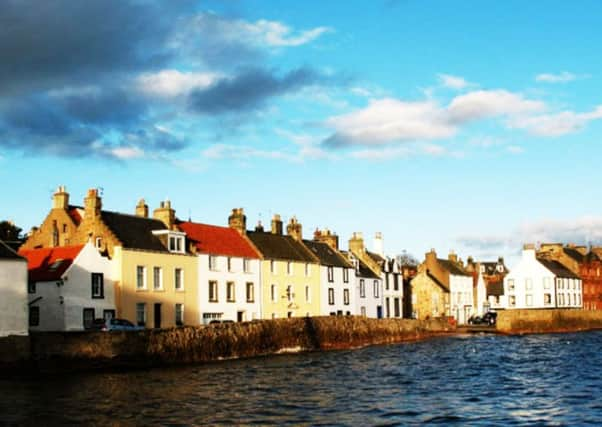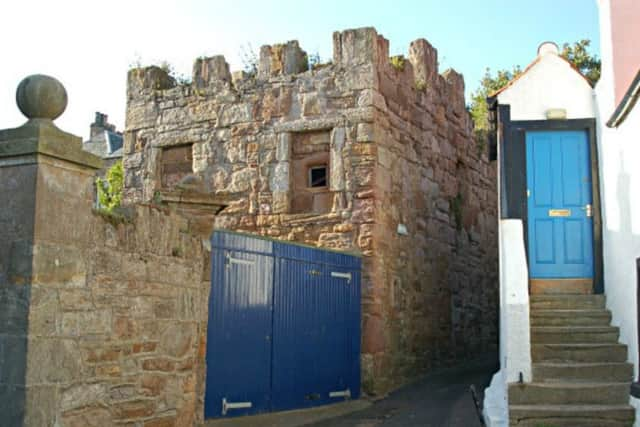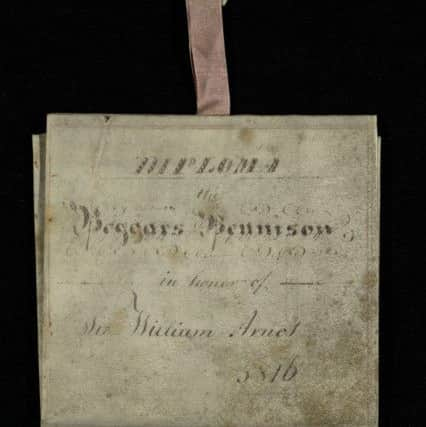The secret sex club of 18th Century Anstruther


The pretty village of Anstruther in Fife may seem like an odd location for a secret sex club but it was here that The Beggar’s Benison flourished from 1732 to 1836.
Dubbed an “erotic order”, its membership was populated by Kirk Ministers, prominent professionals, merchants and nobles who gathered at Castle of Dreel, now a ruin, for its bi-annual meetings.
Advertisement
Hide AdAdvertisement
Hide AdA typical night would include the parading of local women, usually teenagers, who were hired to pose naked in front of the assembled members. The men were forbidden to speak or touch the women, whose purpose was solely to decorate and arouse.


The men would then ‘amuse themselves’ and the spouting of bawdy songs, verses and stories, would typically follow - as would a great deal of food and port.
The few surviving copied records of the club - the originals burnt after it folded - were published by Paul Harris Publishing, of Edinburgh, in 1982.
They offer a fascinating insight into the private exploits of some gentlemen in Georgian-era Scotland, which then held a deeply moralistic and emotionally austere public face to the world.


Advertisement
Hide AdAdvertisement
Hide AdThe late author Alan Bold, in his introduction to the reprint, said: “For too long we have taken seriously the grim public face that 18th century Scotland presented to the outside world.
“It is worth looking closely at the unbuttoned way Scotsman behaved in private when, that is, they had the opportunity to do so.”
Several relics from the Beggar’s Benison survive, including a snuff box of women’s pubic hair gifted by honorary member George IV during his visit to Scotland in 1822.


It is said the Prince Regent donated the item to help replace a wig made from the pubic hair of Charles II’s mistresses that was worn by the club’s chief, or sovereign.
Advertisement
Hide AdAdvertisement
Hide AdThe hair piece was taken from the group when the breakaway Wig Club was formed in Edinburgh in 1775 and has since been lost.
The Beggar’s Benison met on Candlemass and St Andrew’s Day at Castle of Dreel, home of the Anstruther Family.
The leading figure in the order was John McNachtane, hereditary chief of Clan McNaughton, who was appointed the Collector of Customs at Anstruther in 1728.


He was also the representative elder for the burgh in the General Assembly of 1767 and 1769.
Advertisement
Hide AdAdvertisement
Hide AdBold detailed the club meetings which were held “in a room, known to initiates as the Temple, (where) the members wined and dined an indulged in all night sessions of lasciviousness.”
Members, known as Knights, insisted on the “decorative presence of naked females,” Bold wrote, with records further detailing the women draughted in for the gatherings.
A record for the 1734 Candlemass meeting described how “one feminine gender, 17, was hired for one Sovereign, fat and well developed.”
After she sat on display, “every Knight passed in turn and surveyed the secrets of nature.”
Advertisement
Hide AdAdvertisement
Hide AdBold added: “Clearly the women were admitted purely as objects of arousal since a principal purpose of the Order was phallic exhibitionism.”
St Andrews University holds several relics from the Beggar’s Benison, including a “testing platter” - a silver plate decorated with a crude engraving - on which the new recruit placed his genitalia - covered in a white napkin - to present to other members.
After the full initiation ceremony was complete, port was served in a club glass decorated with the club insignia and the “new brother’s health was heartily and humorously drunk.”
Toasts were given and texts, such as Ovid’s Art of Love, Byron’s Don Juan and Cleland’s Fanny Hill were recited.
Advertisement
Hide AdAdvertisement
Hide AdLectures, usually of a biological nature and often discussing sexual function and the reproductive systems of animals, were sometimes given.
Membership was limited to 32 men, with records showing Bishop David Low of Pitenweem and his friend the Earl of Kelly were “unbroken in their countenance at all Chapters.”
David Wilson, relief minister at The Shore, Pittenweem, was a “prime Knight”, according to the account.
Founding members included Charles Wightman, Ansthruther’s leading merchant of the day; Dr Thomas Nairn, a surgeon; and Alexander Melville, a Whig councillor. Several Fife squires were also part of the club.
Advertisement
Hide AdAdvertisement
Hide AdBold said: “In its ritualistic detail and sexually explicit symbolism, the Beggar’s Benison club was remarkable. It was not however, unique as an 18th Century institution.”
Bold points to The Hellfire Clubs of the 18th Century that offered “clandestine pleasures” to a membership made up largely of high society rakes.
Activities at the Beggar’s Benison, however, centred around a more particular set of practices.
Bold added: “The Beggar’s Benison of Anstruther was, conspicuously, an erotic order.”
Advertisement
Hide AdAdvertisement
Hide AdHowever, despite the “lurid spectacle” of club activities, Bold described activities as “relatively harmless.”
He added: “If the attitude to local girls was cavalier then it was done with the best of intentions in the most morally unstable of societies.”
The club folded in 1836 as times changed and successive leaders became less enthusiastic about its activities.
The last secretary, Matthew Connolly, used the last £70 in the club’s funds to buy prizes for a primary school in Anstruther.
The scrapbook was burned, but not before a copy was made.
As a result, Anstruther’s once top secret sex club, to this day, remains a very public curiosity.
